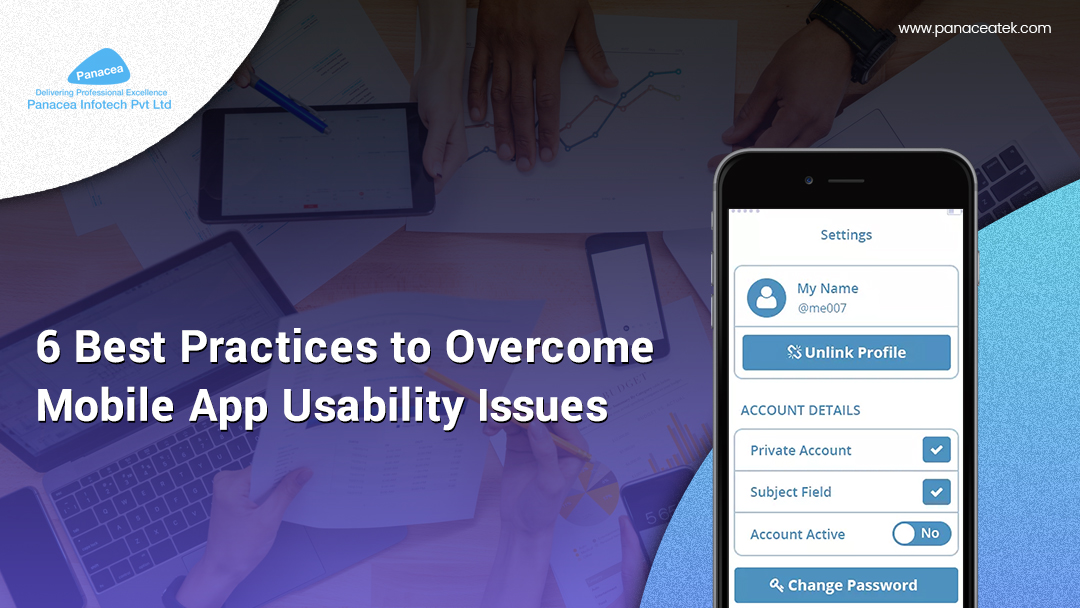- Panacea
- Mobile app development
- 2nd June 2017
Why does Usability Matter Most in Success of Mobile App Development?
The mobile application’s usability is defined by three major attributes- efficiency, user satisfaction, and effectiveness. A bad user experience (UX) makes users delete app from their smartphones. Generally, users stick with application longer if it is simple, easy to use, and provides the seamless user experience. Advancement in technology has enabled mobile app development companies to develop a wide range of applications. But, not all applications mark success in the application store. Why? The answer is simple. Many app development companies overlook certain factors like simple navigation, high battery consumption, small screen sizes, etc. Therefore, it is mandatory to perform usability testing before deploying an application in the market.
What does Usability of Mobile Application Cover?
Today, smartphones are not limited only to calling and texting. It has been observed that smartphone users spend their more time interacting with apps. Thus, there are many factors that decide the usability of an application like-
- User Interface (UI)
- Simple navigation
- Fast loading and crash-free applications
- Less consumption of device memory and batter
- Better network connectivity and more
Most of the times, developers overuse the features in the application and lose the balance between usability and functionality. It is great if the application is packed with amazing features but what if it lacks usability? Nobody will use it despite having those amazing features. There are few common usability issues that many mobile app development companies ignore while designing the applications. Let’s have look on them:
1. Platform Usability
Today, Android, iOS and Windows are three major platforms in mobile app development industry. It is not easy to clone Android app for iOS and the other way around. Each platform follows different standards and guidelines for UI/UX designs. Therefore developers should decide targeted platform first and design application according to standards defined by particular platform. Because, each platform comes with a different design, coding, UI concepts. For instance, to navigate on the previous screen, iPhone devices do not have “back” button like Android smartphones.

2. Version Compatibility
Every year, mobile companies launch new version of their operating system. For example, Android 7.0 and iOS 10 are latest versions today. But, it is not the case that developers design new application for every version. They can make the application compatible with multiple OS versions. For example, an application designed for Android 7.0 should also get installed on Android 5.0 and vice-versa. Hence, developers keep this compatibility issue in mind while building an application. Otherwise, version compatibility should mention in application store like “supports version iOS 8 and above.”
3. Easy Navigation
Poor navigation can lead app to face bad defeat in a market. Why is navigation so important? Well, it starts right from the beginning when a user installs an app. It includes:
- How well the installation guidelines and steps are defined?
- Whether users find difficulty while installing the app
Once, the application gets installed, it’s time to check how user-friendly it is. An application should seamlessly navigate users for what they exactly looking for. Many applications have unique features but unfortunately, users struggle to explore them at first place due to bad navigation. Important action buttons like ok/cancel, sign-up/sign-in, back/forward navigation, etc should be placed properly on landing pages. Otherwise, a user will end up lost on the random page.
4. Content and Typography
Reading text is always complex as long as it’s on small screens. Users see different combination of characters, phrases, and signs while browsing the apps. Many times, UI/UX designers overlook the small details about content displayed on the application screen. Including wordy information causes bad user experience as users feels annoying while going through it. Therefore the content should be brief and relevant with readable fonts. It is best practice to provide zoom in and out feature to make the application more interactive. Many applications have dark-toned (red, green, purple, etc.) background color which makes difficult to read the text. To avoid this, developers should use light background colors so that information can be easily highlighted on it.
5. Resolution
We all know that smartphones come up with different screen sizes. But, while developing an app, developers make a very common mistake- screen resolution. An application might work fine on small screen sized smartphones but not on tablet and Mac-books. The content either shrink or expand if an application opens in different devices. Also, many developers do not consider the landscape mode while designing the application. Because every smartphone has auto-rotate screen feature to operate a device in landscape orientation. A good mobile application is one which is designed for both portrait and landscape orientation.
6. A/B Testing (Alpha and Beta Testing)
This is an extremely important phase to test the application with real users. A/B testing is part of mobile app usability testing and every mobile app development company performs it before launching an application in the market. Users are provided with two or more variations of app design and layout and asked which one they prefer most. They are also allowed to use the application and testing team observes live action using head-over cameras and motion sensors attached to users’ fingers. Based on feedback, Full Stack developers make changes to improve the user experience of an application.
The success of the mobile application mainly depends on how users apprehend it. More features don’t mean the app will make great revenue in the market what matters is- usability. Tinder, a famous dating app is the best example for this. It works solely on simple swipe feature. The mobile app development companies should consider user requirements more seriously. Because an application designed as per user expectations makes more success in the market.

